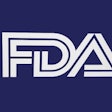
In vitro diagnostic (IVD) test developers who offer laboratory developed tests (LDTs) and fought for regulatory oversight in the CLIA family will be interested in how the U.S. Food and Drug Administration (FDA) has initially ruled to settle the controversy.
It's a first and mighty swing at striking the balance of power between Clinical Laboratory Improvement Amendments (CLIA) standards, clinical laboratory inspectors/surveyors and clinical laboratory accrediting organizations (AOs), and the FDA. After years of wrangling, the prepublished LDT final rule takes a point–counterpoint approach in hundreds of ways. Final words will be set in stone in the U.S. Federal Register on May 6, according to the FDA, but in the meantime, here are some of the salient points found inside.
1. Industry pitched CLIA as providing regulatory mechanisms designed to ensure accurate test results ... CLIA's regulations include requirements pertaining to proficiency testing, laboratory personnel qualifications, test ordering and reporting, quality control, and the development and use of laboratory processes and procedures ... and inspections provide assurances.
The FDA said neither CLIA nor inspections verify that the tests themselves comply with the requirements of the U.S. Federal Food, Drug, and Cosmetic Act (FD&C Act), which is designed to assure that products are safe and effective for their intended purpose. Through a four-year process of phasing out the FDA's long-term general enforcement discretion, more clinical laboratory tests and test components will, as medical devices, begin falling under the FDA's rigorous processes and scrutiny. Targeted enforcement discretion will apply to several categories.
FDA's bottom line: The deal killer over CLIA was that the Centers for Medicare and Medicaid Services (CMS) does not regulate critical aspects of laboratory test development (see page 89); does not evaluate the performance of a test before it is offered to patients and healthcare providers; does not assess clinical validity; does not regulate certain manufacturing activities; does not provide human subject protections for individuals who participate in test clinical trials; and does not require adverse event reporting.
For example, "for a test that is intended to detect genetic variants to predict the risk of a person developing a particular disease, FDA reviewers would evaluate whether the test can accurately and reliably detect the intended genetic variants in the intended use specimen type (e.g., blood, saliva), and FDA would also evaluate evidence demonstrating whether the genetic variant is associated with the risk of developing that particular disease.
"For a test intended to quantify the levels of a protein to aid in the diagnosis of a particular disease, FDA would evaluate whether the device can accurately and reliably quantify the levels of the protein in the intended specimen type and also whether the levels of protein quantified by the test can be used to diagnose the disease. FDA also reviews IVD labeling to ensure there are adequate instructions for use, which includes directions for performing the test and interpreting the results, warnings, limitations, a summary of test performance (for example, accuracy), and how the results are reported."
2. Industry pitched proficiency testing (PT), although not whole-heartedly, as a type of LDT quality system (QS). Lab leaders know that CLIA-certified laboratories perform PT to ensure that assays are performing properly, even though laboratories may potentially continue testing after failing PT, according to a comment mentioned.
Another comment offered that the Centers for Disease Control and Prevention (CDC)’s Newborn Screening Laboratory Quality Assurance Program (NSQAP) administers proficiency testing and validates new screening tests to ensure the accuracy of results generated by laboratories. The comment suggested that because of this program, increased FDA oversight is not needed.
However, the FDA clarified NSQAP's role, saying it provides quality assurance (QA) services to newborn screening laboratories by providing reference materials, providing proficiency testing regarding laboratory operations, providing quality control reports, and offering training and consults. NSQAP evaluates the proficiency of laboratory personnel and procedures, not the safety and effectiveness of IVDs offered as LDTs.
The FDA also said proficiency testing programs are not adequately representative of the routine conditions of clinical use, do not consider a test’s intended use, and do not represent the challenges encountered in routine testing. They may not even cover the entire test procedure, and the FDA pointed out many more limitations (see page 121).
FDA's bottom line: Proficiency testing is insufficient for regulating IVDs offered as LDTs. Here's why, according to the FDA: under CLIA, enrollment in a Department of Health and Human Services (HHS)-approved PT program is a requirement for only a portion of tests that a laboratory offers, and PT programs do not address all IVDs offered as LDTs.
Furthermore, under the CLIA regulations, proficiency testing is required for only a limited number of analytes (found in 42 CFR part 493 subpart I: Proficiency Testing Programs for Nonwaived Testing), which are referred to as “regulated” analytes by CMS.
From the list of LDTs approved by New York State's Clinical Laboratory Evaluation Program (CLEP), the FDA saw that many IVDs offered as LDTs are tests for analytes other than regulated analytes, the final rule preview showed. Additionally, the list of regulated analytes does not include any genetic markers, and FDA is aware from the NYS CLEP approval database as well as discussions with stakeholders that many IVDs offered as LDTs are genetic tests.
"There are also many other analytes for which there are no programs that offer PT. When a laboratory performs tests, including IVDs offered as LDTs, for analytes that are not regulated under CLIA or where there is no proficiency testing program available, the laboratory is required only to verify the accuracy of the test at least twice annually, which may be done by splitting a patient sample with a laboratory that offers the same test and comparing results. The number of samples tested and the acceptability of the results is determined by the laboratory director. Comparing results from a small number of samples, possibly even a single sample, without prospective metrics for success is not equivalent to a prospective determination of safety and effectiveness prior to initiating testing on patient samples," the FDA stated.
Moreover, inferior tests can pass through PT and compete with FDA-approved tests (see page 110).
Laboratory compliance with current good manufacturing practice (CGMP) requirements will benefit the public, said the FDA. New quality system regulation (QSR) requires manufacturers to establish procedures for the consistent quality manufacturing of devices. It was pointed out that the FDA recently issued comprehensive amendments to harmonize the QSR with international quality management system requirements (89 FR 7496, February 2, 2024). They go into effect February 2, 2026.
LDT final rule advice for labs
Some clinical laboratory industry consultants, such as the firm Sidley, say litigation to challenge the final rule seems inevitable. However, they also recommend laboratories and their business partners begin carefully assessing the status of each specific LDT they offer to determine what requirements they should plan to comply with, by when, and how. They will also need to become intimately familiar with FDA requirements and policies that govern modifications to devices and promotional labeling.
"Under the current rule, many labs developing new LDTs or planning modifications to existing LDTs would need to conduct new studies to support premarket submissions for their new or modified tests," the Sidley blog post from April 29 explained. "One big question is whether they will conduct the studies now or wait until any potential litigation is resolved. Those choosing to move forward may be motivated by fear that litigation may not be successful and that the current implementation dates will remain untouched."
The FDA will hold a webinar May 14 to provide an overview of the FDA's final rule and enforcement discretion phaseout policy.



















